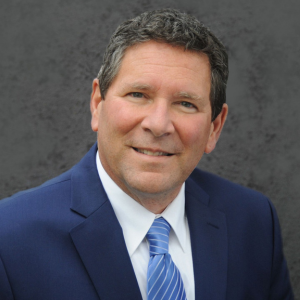
Implementing innovative infrastructure funding mechanisms
Considerations in launching road use charging programs
As gas tax revenues recede and state departments of transportation and the federal government seek new and more sustainable mechanisms for funding highway transportation, road use charging (RUC) is emerging as a viable option.
RUC repositions transportation as a pay-for-use utility, charging motorists a fee per mile driven rather than a tax on the gallons of fuel consumed. Many states are either researching RUC, implementing pilot programs or have enacted legislation approving implementation.
Assessing RUC’s value
There are three main reasons why road user charging is gaining traction:
It’s fair. Road use charging is, first and foremost, considered fair. Everyone pays in direct proportion to their use. If Motorist A drives twice as far as Motorist B, A pays twice as much as B does. If Motorist A drives an electric vehicle and Motorist B drives a gas-powered vehicle, both still pay a fee proportional to the distance they drive. No one vehicle type is charged more than another.
It’s flexible. DOTs can tailor the scope and pricing of road user charging to fund specific needs. While at its heart, RUC is designed as a replacement for the Motor Fuel Tax, it can also serve other purposes. These uses might include charging according to a vehicle’s wear and tear on the roadways, its carbon emissions profile its location on the transportation network or its contribution to congestion. RUC can be customized to influence specific travel habits and achieve specific desired outcomes in a jurisdiction.
It’s future ready. Road user charging is a future-ready funding source that will continue to generate revenue as vehicle types evolve and more fuel-efficient vehicles are purchased. In addition, the collection method can be incorporated seamlessly into future digital platforms, leveraging telematics to report vehicle characteristics (speed, fuel consumption, location, distances traveled, etc.); and apps that can provide value-added services for motorists, as well as paying a RUC fee.
Getting started with RUC
Pilot programs serve as a testing ground for DOTs to experiment with collection methods, identify the barriers to adoption that accompany road use charging programs and, importantly, inform ways to resolve them. Below are some emerging best practices to help pave the way for road use charging in a jurisdiction.
Engage legislative champions. Implementing a new method of funding infrastructure will require statutory approval. That begins by helping legislators understand what road user charging is, how it differs from the gas tax and the benefits that it can offer. Road use charging is not a new tax; it’s a new way of collecting revenues.
Educate the public. The tallest hurdle DOTs will face is not necessarily technological. The technology exists and pilot programs have shown it works. The bigger challenge is educating the public and stakeholders about why the DOT is considering road use charging in the first place. Critical conversations with residents include an overview of how transportation infrastructure is currently funded and how RUC might help overcome any issues with the current model. Helping the public understand the fundamentals of the system sets the stage for introducing a new funding mechanism.
In Oklahoma, the DOT initiated a first-of-its-kind Fair Miles Oklahoma Pay-Per-Mile Pilot to study the implementation of RUC on a wider scale. Public education and engagement were a crucial part of that pilot. To help educate its constituents, Oklahoma developed key messages that explained:
- How transportation infrastructure is currently funded
- Why the current method is not sustainable
- What road user charging is and is not
Participants in the pilot got first-hand experience with how a RUC program might work including the technology and mileage reporting options, billing and payment processes.
Increasing public and stakeholder understanding of the need to change how transportation infrastructure is funded provides a solid foundation for a pilot to evolve into a full-scale road user charging program.
Generate a large pool of interest. Not everyone who signs up for a pilot will follow through and participate. That’s why DOTs need a strong communications campaign to help generate a groundswell of interest and secure a working sample size.
Offer choices. Oklahoma allowed participants to choose one of four mileage recording options, depending on their preferences and comfort levels:
- Snap a photo of the odometer and send it in
- Download a smartphone app and connect it by Bluetooth® to the vehicle
- Plug a GPS device into the vehicle’s onboard diagnostics port, similar to pay-per-mile insurance programs
- Use vehicle telematics that automatically collect and transmit RUC information including in-state and out-of-state mileage
Although these choices satisfied most participants, the industry continues to study how best to collect and analyze mileage data while protecting motorists’ privacy.
Account for out-of-state mileage. In Oklahoma, if a participant opted not to use a GPS device, the DOT automatically assumed all miles traveled were in-state and “charged” participants accordingly. Those with GPS devices received a credit for the miles they traveled out of state. (All participants received a mock invoice for their road user charges compared to an estimate of what they would have paid in fuel taxes based on the mileage recorded.)
Adopting RUC as one replacement for other transportation funding sources
Many DOTs believe that road use charging is a viable, sustainable mechanism for providing the funding they need to modernize and enhance their transportation systems.
With many fundamental questions about RUC answered, industry research is now focused on how best to implement a full-scale program. Possibilities may include private partnerships with large online retailers or payment processors, which have the robust infrastructure and capacity to manage millions of user accounts
Moving confidently into implementation
Given the Infrastructure Investment and Jobs Act’s grant funding, continued erosion of fuel tax revenues and the long lead times associated with bringing new programs online, the time is right for DOTs to test road use charging. With the fundamental challenges resolved and best practices emerging, states can move forward confidently into implementation.


ABOUT THE AUTHORS
 Mike Warren
Mike Warren
National Practice Consultant
HNTB Corporation
Mike Warren is a national practice consultant at HNTB. He brings over 24 years of experience in RUC, emerging mobility, connected and automated vehicles, smart infrastructure and innovative funding. Before joining HNTB, Warren was instrumental in advancing road user charging initiatives across the United States, including the initial Oregon RUC Pilot Project, which led to the OReGO program, and pilot projects for California, Colorado, Minnesota, Wyoming and the RUC America multistate coalition.

Kary H. Witt, PE
National Toll and Road Use Charge Practice Leader
HNTB Corporation
Kary Witt is a National Toll and Road Use Charging Practice Leader for HNTB. Backed by more than 30 years of diverse industry experience, Witt’s expertise includes helping clients across the country with financing, planning, operating, building and maintaining toll programs and facilities. Witt was the project manager for Oklahoma’s Fair Miles Oklahoma Pay-Per-Mile Pilot, a unique and highly successful pilot that explored how RUC could serve as a gas-tax replacement, and how it impacts rural and tribal communities.
